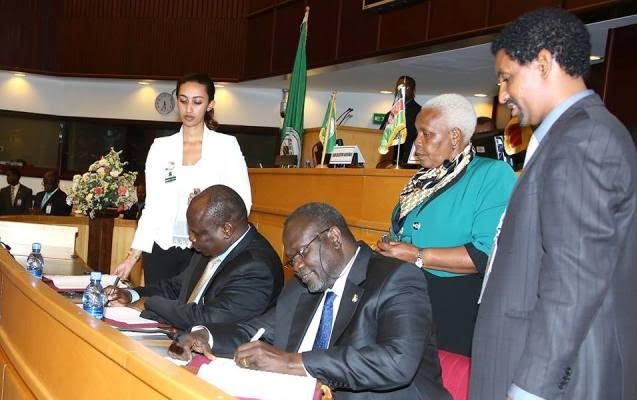Leaders met in Addis Ababa yesterday in a last ditch effort to bring peace to South Sudan after 18 months of war. The conflict that shattered the temporary peace achieved after a 2005 agreement with Sudan continues to take its toll on the country’s population and threaten regional security. However, despite strong pressure from the international community, the South Sudanese government walked away from yesterday’s talks without signing the proposed agreement, leaving many to wonder what is left to be done to finally resolve the conflict.
A History of Violence
Over the last 65 years, South Sudan has known little peace. With the exception of a 10 year period from 1972 to 1982, war has been a way of life for the South Sudanese. For successive generations, war has been a constant condition that defined the state and their lives. There were high hopes for peace in 2011 when the country officially gained its independence from Sudan, but conflict broke out in South Kordofan and Blue Nile states, even before the South Sudan celebrated its official independence.
Conflict continued with various groups throughout the country until a power struggle fractured the ruling government in December 2013, a mere 17 months into the country’s independence. The resulting civil war has already killed tens of thousands of people and displaced nearly 2 million people.
Peace Deal on the Ropes
The high stakes of the conflict has brought regional and international heavyweights into the fold to try and find a solution to the fighting. The current peace process is led by the East African Intergovernmental Authority on Development (IGAD) and supported by the United Nations, the African Union, the Western troika of the US, the UK and Norway, as well as China and the EU. But even with economic and political pressure exerted by all these players, progress has been slow as both the South Sudanese government led by President Salva Kiir and the main rebel group led by Riek Machar dragged their feet. Only the threat of additional targeted sanctions brought Kiir to the talks at the last minute in an effort to meet IGAD’s deadline of August 17 to sign a peace deal after numerous rounds of negotiations. In the end, while Machar signed the deal in a ceremony held in Addis Ababa, Kiir left without signing, calling the agreement a “sellout” and leaving little hope that a resolution will be reached within the 15 day timeframe for additional consultations granted by IGAD.
The current proposed peace plan, negotiated over a period of 17 months, offers a transitional power-sharing government, a plan for a permanent constitution and the establishment of a truth and reconciliation commission to ensure accountability for all sides of the conflict. But despite the hardship experienced by civilians – the UN estimates that 4.6 million people are in need of food aid – and the growing pressure to reach a peace deal, the warring factions have been hesitant to stop fighting. Numerous ceasefire agreements over the last 18 months have failed, often within hours or days of going into effect. Yesterday’s attempt to finalize the peace agreement illustrated this hesitancy once again, and demonstrated how much further the country has to go before real peace can be achieved.
In many ways the conflict and the difficulties in resolving it are the outcome of the South Sudan’s long history of conflict. When war becomes normal, it also becomes the preferred solution to all political problems and the impetuses to find peace disappears. Many of the country’s political elites, both within the government and the various rebel groups, earned their political clout on the battlefield. With a poorly developed local civil society and few civilians in positions of power, it will take far more incentive than just the threat of sanctions to change the course South Sudan is on.
